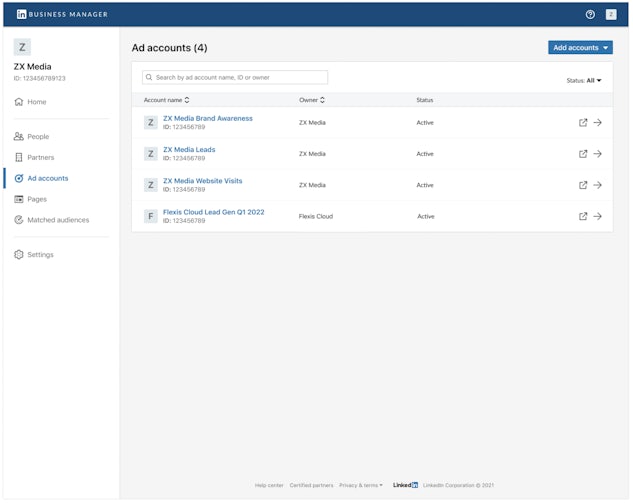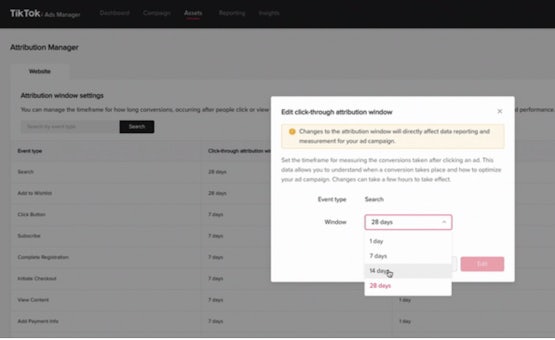Welcome to the latest instalment in Impression’s Paid Social Industry Updates blog, where we discuss the latest social media trends to help you stay ahead of the curve.
Keep reading to discover:
- LinkedIn Launches New Business Manager
- TikTok Launches New Attribution Manager
- Instagram Backtracks on Latest ‘TikTok Style’ Updates
As always, traffic light imagery is featured throughout to indicate the importance of each new update – red denoting a priority update, green representing a less important update and amber lying somewhere in the middle.
LinkedIn Launches New Business Manager

LinkedIn has launched its new Business Manager platform, allowing businesses to manage multiple accounts from one central dashboard.
In a move designed to benefit large companies and agencies, Business Manager aims to simplify ad management – with dedicated tabs for managing people, ad accounts, pages and business partners.

What Does This Mean for Me?
The key benefit of LinkedIn Business Manager is a more streamlined, simplified way of managing various accounts. Marketers can now complete several tasks from a centralised location, offering increased control and visibility across multiple ad accounts.
The central dashboard will also provide marketers with more time to focus on campaign creation and analysis, with easier access to administrative functions across accounts, as well as shared matched audiences.
Interestingly, the announcement from LinkedIn suggests that this is just the beginning for Business Manager. Implying that new capabilities are on the horizon, it appears that marketers will eventually have the ability to uncover strategic insights from the centralised platform, making marketing at scale more efficient.
Ready to set up LinkedIn Business Manager? The platform is currently live, with access available for all businesses! You can learn how to onboard to Business Manager with a helpful guide from LinkedIn here.
TikTok Launches New Attribution Manager

TikTok has introduced a new ‘Attribution Manager’ tool, enabling advertisers to set custom attribution windows for each of their campaigns.
Within Attribution Manager, TikTok has released two options: click-through attribution (CTA) and view-through attribution (VTA). The CTA window options include 1, 7, 14 and 28 days, whilst the VTA window includes off, 1 and 7 days.

What Does This Mean for Me?
TikTok’s latest tool will provide more flexibility for measuring the success of Paid Social activity, by enabling advertisers to set the most suitable attribution windows for each campaign.
This is a key update for ecommerce advertisers, as different products have varying customer journeys, which require flexible attribution windows to consider the length of consideration time before users make a purchase.
For example, whilst a 7 day click, 1 day view attribution window may be suitable for a clothing brand, in order to provide some consideration time for the customer, this wouldn’t be suitable for a high-involvement product such as an engagement ring. In this case, it’s likely that the user will research the product and compare several alternatives; ensuring the right decision has been made before converting. For a high-involvement product such as this, a 28 day click, 1 day view attribution window may be more appropriate to provide enough consideration time to accurately measure the success of the campaign.
Ultimately, these new attribution tools will provide additional ways to measure campaign results, which could help marketers better understand the purchase journey for various products whilst optimising towards better campaign performance.
The new tool is currently available for all web campaigns that use the TikTok pixel or Events API. Ready to trial TikTok’s latest feature? Head over to the ad group level within Ads Manager to set it up!
Instagram Backtracks on Latest ‘TikTok Style’ Updates

It’s no secret that Instagram has been making some big changes recently, increasing its focus on video and recommended content to mirror the success seen by rival social media platform TikTok.
However, in its attempts to increase app engagement, the platform has received some widespread criticism. In recent weeks, frustrated users have launched a ‘Make Instagram Instagram Again’ movement, which has received public support by the Kardashians along with over 300,000 petition signatures on change.org.

Despite user frustrations, Mosseri has revealed that Instagram will continue to focus on video to align with growing trends on the app and evolve with the changing market. However, the platform will be scaling back other features – phasing out the full-screen feed format and reducing the number of recommended posts whilst it seeks to improve its algorithms.
What Does This Mean for Me?
For now, users can expect to see fewer recommended posts on Instagram. However, this may not last for long, as Mosseri has made it clear that both video and recommended content are the way forward for the social media platform.
Which makes sense – despite user criticism, Instagram is ultimately being guided by engagement metrics, and as Mosseri outlines, the majority of likes, shares and views are shifting towards video formats on the platform. It was also announced in February that Reels are the largest contributor to engagement growth – so it’s not surprising that Instagram is continuing to move in this direction.
However, this poses the question – will Instagram run the risk of alienating a key segment of its audience by continuing this shift towards recommended content and video? And will user engagement begin to drop as a result?
The number of UK Instagram users is growing, although this could change if user engagement falls and TikTok continues to grow. Our key recommendation is to diversify your media spend across different social channels to increase your presence across various touchpoints, whilst avoiding over-reliance on one platform. If your target audience makes up the key demographics on alternative social media platforms, diversifying your Paid Social strategy may provide new opportunities.
Another key takeaway is that designing creative assets optimised for video is going to become increasingly important as social media platforms inevitably shift towards video. If you don’t have the capabilities to create video content, consider incorporating gif animations into ads or building slideshows from static imagery. You could also consider creating user-generated content as a more inexpensive, authentic way to connect with your target audience via video. Learn more about Meta’s best practices for video ads here.
Look out for our next blog post in September for more paid social industry updates to inspire your paid social strategy. If you want to talk about your business’ paid social aspirations, get in touch!



